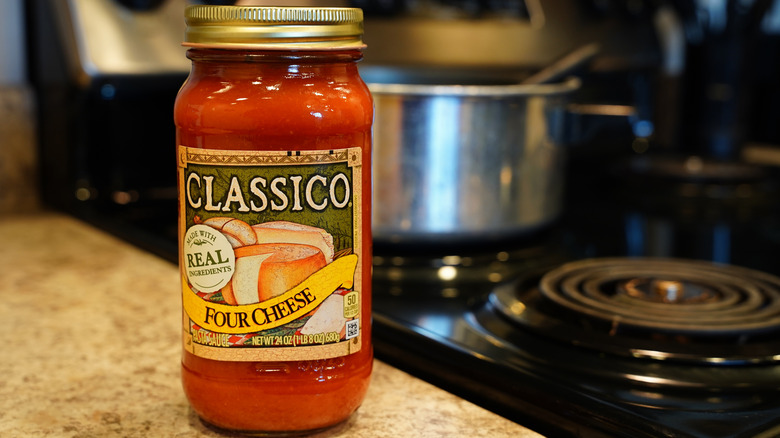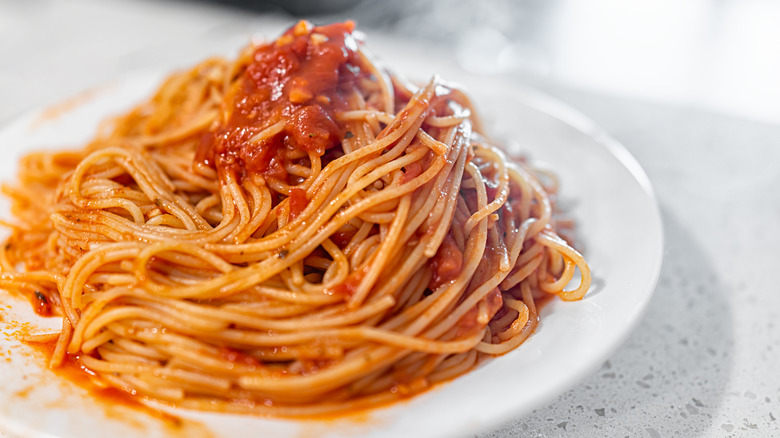One Secret Ingredient Majorly Upgrades The Flavor Of Jarred Pasta Sauce
We may receive a commission on purchases made from links.
While there's nothing quite like spaghetti with a slow-simmered Sunday sauce, sometimes you don't have all day to spend in the kitchen. There's no shame in purchasing some instead since, just like with boxed cake mix, there are a number of tricks to make jarred pasta sauce taste homemade. Chef Maricel Gentile, the owner of Maricel's Kitchen and the author of "Maricel's Simply Asian Cookbook," suggested one that may not be on your radar: Monosodium glutamate, better known as MSG. MSG has long been seen as the bad guy in American culinary circles. But, as Gentile told The Takeout exclusively, "I grew up in the Philippines where a little MSG was as common as soy sauce in the pantry." In fact, she admitted, "When I moved to the U.S., I was honestly surprised by how much fear there was around MSG."
Luckily, rumors of its ill effects have been largely debunked, so MSG can now take its rightful place as a valuable kitchen staple. As for what it brings to your store-bought spaghetti sauce, essentially, it serves as an umami booster. According to Gentile, "Umami is the deep, savory backbone that many jarred sauces lack. It makes tomato flavors rounder, meatier, and more balanced, especially in sauces that taste flat or too acidic."
Likewise, MSG also has the ability to make your sauce taste like it's been cooking on the stove all day, even when it comes straight out of a jar. As Gentile reminisced, "My Lola used it when she wanted a broth to taste like it had been simmering for hours. It was never about shortcuts, it was about care, intention, and making the most of what you had."
The proper way to add MSG to a pasta dish
If you're adding MSG to pasta sauce, Maricel Gentile's advice is to, "Start small. Add just ¼ to ⅛ teaspoon per 2 cups of sauce." She recommends stirring it in gradually as you're heating up the sauce, and then letting it simmer for a little while so all of the flavors have a chance to blend. Be sure to taste the sauce before you add any more MSG, though. As the professional chef warned, "It shouldn't taste salty or 'off.'" Further, there's really no point in adding MSG to pasta water.
As Gentile explained, the water, along with any seasonings, "mostly gets discarded when you drain it, so it's not very efficient." Nor is it a cost-efficient replacement for salt either. Consider that Ac'cent Flavor Enhancer, which is pure MSG, retails for $5.97 for a 10-ounce canister. This is considerably more than a shaker of regular sea or table salt, which you likely already have.
What you can do, if you feel the pasta dish still needs a little extra something, is to sprinkle it with just the tiniest bit of MSG right before you eat it. Be careful not to use too much, though. As Gentile pointed out, "A little goes a long way; it's a flavor booster, not a seasoning salt."

